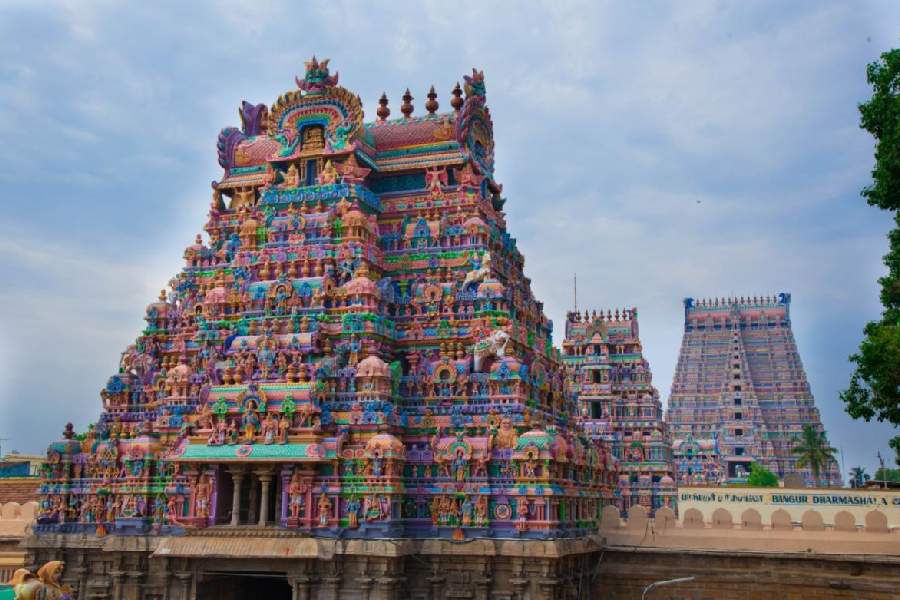Amid all the hullabaloo of an intense campaign, Kalkulam, a village 72km from Chennai near Kalpakkam, the site of a large atomic energy establishment, is a picture of serenity.
Flags of only two prominent regional parties — DMK and AIADMK — flutter with gusto. The BJP, trying to make inroads, is not visible anywhere.
S. Senthilkumar, a retired public sector executive, is keen to renovate the old Shiva Temple in his village along with his friends, but he finds the knowledgeable farmers of Kalkulam are more focused on taking cooperative crop loans “in the hope that they will be written off,” he says wryly.
That is a key marker of the grim economic mood at the grassroots level. It’s in sharp contrast to Prime Minister Narendra Modi’s high-pitched campaign for the BJP, lambasting the DMK for deriding ‘Sanatana Dharma’ and for the absence of DMK MPs in Parliament during the discussion on the Ram Mandir in Ayodhya.
“Outside big cities like Chennai, key towns and the social media buzz, there are no signs of the BJP in villages like ours,” Senthilkumar tells The Telegraph.
“Yes, there is a sense of fatigue with the main Dravidian parties, but issues like ‘Sanatana Dharma’ or the Ram Mandir in Ayodhya will have no impact on the elections,” he adds. “In Tamil Nadu, politics is intertwined with caste power and money,” argues Senthilkumar.
Over the last few years, the RSS has been strengthening its base in parts of Kanniyakumari, Nilgiris and Coimbatore districts. But neither that nor DMK youth wing leader Udhayanidhi Stalin’s remarks on Sanatana Dharma last year that ruffled several feathers appear to have made much of an impact in Tamil Nadu, a state that has embraced major faiths over centuries.
A sociology professor, who spoke on condition of anonymity, pointed out that even after Periyar launched the “self-respect movement” that later politically evolved as the Dravidian movement, “Hindu identity” was never an issue in the then Madras Presidency (which was virtually the entire South India). Periyar’s atheism, which the DMK under C.N. Annadurai’s leadership eschewed long back, co-exists with all religious faiths.
“The Hindu identity in Tamil Nadu is different from what it is in other states in the North. It is spiritual, secular, embraces all faiths, does not discriminate against Christians, Muslims and other faiths and we all live together,” says senior Congress leader P. Chidambaram.
On Modi’s recent remark (in an interview to a Tamil television channel) that there were several places in Tamil Nadu beginning with the name “Ram” like Ramanathapuram, Rameswaram and so on, and many temples for Lord Ram, former state Congress chief K.S. Azhagiri said: “True, we have many more beautiful temples for Lord Ram in Tamil Nadu; but our faith is implicit, not exhibitionist, and certainly not for political mobilisation or polarising on religious grounds.”
In South Asia’s biggest temple in Srirangam dedicated to Lord Ranganathaswamy, believed to be the “Kula Devata” of King Dasharatha of Ayodhya and father of Ram, there is a small shrine even now near the sanctum for “Thulukka Nachiyar” or “Bibi Nachiyar”, a medieval Muslim princess who fell in love with a “vigraha (idol)” of the Lord and became his eternal devotee. Though there are different versions about how the princess reached Srirangam from the Sultanate in Delhi after a Muslim invasion of the south by Malik Kafur (AD 1310-1311), it remains a standing testimony to the South’s spirit of religious accommodation and catholicity of outlook, emphasised a retired professor of philosophy in Chennai.
Tamil Nadu votes today











